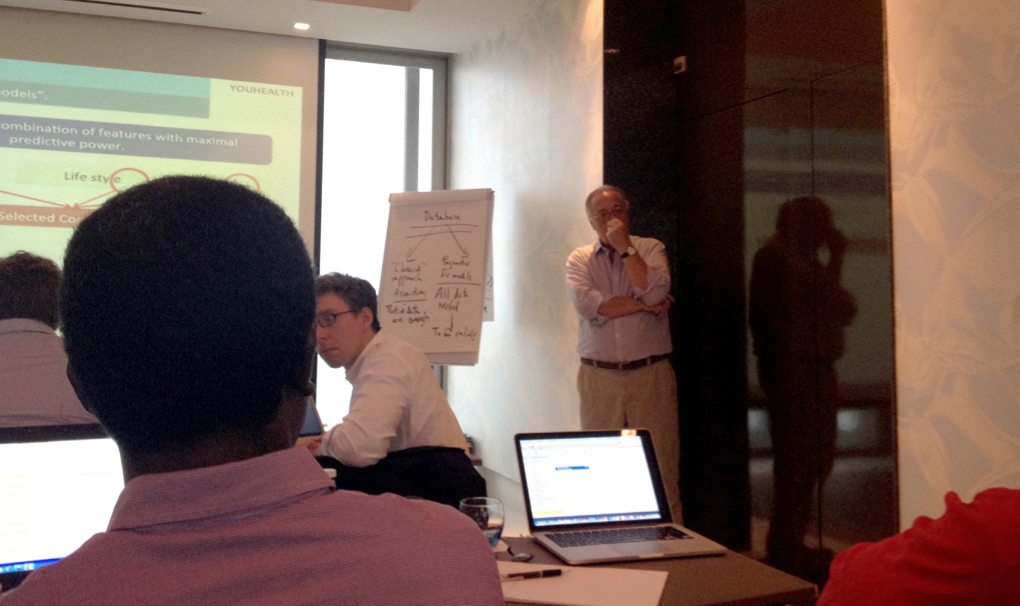About the study
Frailomic is an international initiative that focuses on an under-researched area in frailty research by aiming to use biomarkers to determine the factors that convert frailty into disability. The main objective of the study is to develop clinical instruments that can predict the risk of frailty, improve the diagnostic accuracy of frailty in day-to-day practice and assess the prognosis of frailty in terms of disability and other adverse outcomes.
The Frailomic project is being conducted by a well-balanced consortium distributed over the individual tasks in the respective work packages. The FRAILOMIC consortium comprises of a total of 20 institutions from nine different countries (Austria, France, Germany, Italy, Spain, Switzerland, Sweden, the United Kingdom and the United States). The chief investigators for the study include:
– Professor Leocadio Rodríguez Mañas of the Hospital Universitario de Getafe, Madrid, Spain
– Professor Alan Sinclair of Diabetes Frail, Luton, UK.
– Professor José Viña of University of Valencia, Spain
Aims
The aim of the Frailomic initiative is to develop clinical instruments composed of clinical and laboratory biomarkers of frailty. The primary objectives of the project are:
- To improve the diagnostic accuracy of frailty in day-to-day practice
- To predict the risk of frailty
- To assess the prognosis of frailty in terms of disability and other adverse outcomes
Frailty Intervention
Frailty is an age-associated syndrome characterised by an increased vulnerability to minor stressors, decreasing an older person’s ability to carry out activities of daily living. The prevalence of frailty in people aged over 65 years is high and tends to increase with age. Frailty is one of the main predictors of adverse outcomes in older people, including death, hospital admission, permanent institutionalisation, falls and disability. Frailty often precedes the development of disability, and therefore the early detection of frailty provides a crucial opportunity to intervene on the pathway leading to disability. Detecting frailty and intervening before it progresses to disability is increasingly necessary as the population ages. Testing the clinical practicality of the existing definition of frailty using a combination of clinical and laboratory biomarkers is therefore a fundamental process to prevent disability and subsequent deterioration of quality of life in our ageing population.
Methods
The Frailomic initiative will involve the use of standardised and innovative technology in order to measure the levels of blood and urine biomarkers in up to 75,000 older participants from a total of eight different cohorts (Toledo Study of Healthy Ageing, ENRICA, Three-City-Bordeaux, InChianti, SardiNIA, LIFE Study, SAGE and COURAGE). The large number of participants incorporated into the project will allow testing of the research questions with high power and validity.
The Frailomic project comprises of two key phases, Phase 1 (the Exploratory phase) and Phase 2 (the Validation phase).
Phase 1 – Exploratory phase
Exploratory studies will be performed in order for biomarkers to be identified using blood and urine samples collected from approximately 75,000 older people. These findings will be combined with information on clinical biomarkers obtained from the same cohort in order to identify the biomarkers that predict the risk of frailty, detect frailty, and assess the progression of frailty. Various sub-studies will be performed in distinct populations throughout this phase, particularly older individuals with risk factors that make them more susceptible to develop frailty, for example those with cardiovascular disease.
Phase 2 – Validation phase
The predictive capacity, diagnostic accuracy and prognostic value of each biomarker identified in phase 1 will be assessed in phase 2. The primary aim of this phase is to produce statistical models that will integrate both laboratory and clinical biomarkers. The best fit models will be chosen following testing of the validity of the risk, diagnostic and prognostic biomarkers in the cohorts participating in phase 2. These models will aid in the development of ready-to-use kits to be used in clinical settings, helping to identify high risk individuals, to make a diagnosis and to assess how frailty will progress.








